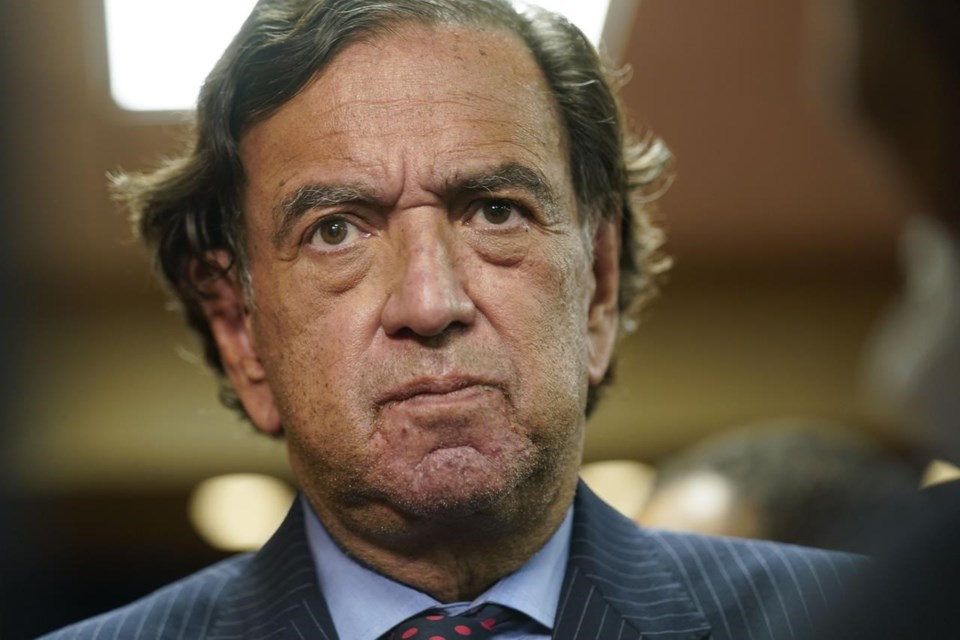ALBUQUERQUE, N.M. (AP) — Many decisions by New Mexico’s most powerful regulatory panel have had direct economic and environmental consequences for one corner of the state, and yet not one candidate nominated to fill the Public Regulation Commission is from northwestern New Mexico.
Critics are concerned about the lack of representation as Gov. Michelle Lujan Grisham prepares to pick a new commission as part of an overhaul that takes New Mexico voters out of the equation. A constitutional amendment approved in 2020 turns the commission from a five-member elected body to a three-person appointed panel charged with overseeing electrical utilities and other industries.
Former two-term governor and U.S. diplomat Bill Richardson is among those taking notice. He called it “a glaring omission,” saying residents in the area need to have a voice in future regulatory decisions.
He pointed specifically to Navajos, saying members of the Native American tribe have borne the brunt of energy development over decades, from tapping oil and natural gas reserves and uranium deposits to hosting major coal-fired power plants that have provided electricity to millions of customers elsewhere in the Southwest.
“To ignore northwestern New Mexicans and the Navajos in Cibola, McKinley and San Juan counties is both short-sighted and insensitive,” Richardson told The Associated Press in a phone interview. “The PRC needs to go back to the drawing board. Period.”
The former Democratic governor rarely interjects himself in New Mexico politics these days and works mostly on international issues that include freeing political prisoners and others. However, he has strengthened his relationship with Navajos over the past few years through a relief fund he and former Navajo Nation President Peterson Zah created to bring tribal members supplies during the coronavirus pandemic.
Richardson noted that many Navajo families still lack running water and electricity despite living in the shadow of the Four Corners Power Plant and the recently shuttered San Juan Generating Station.
Most of the nine candidates under consideration are from New Mexico's most populated areas — Albuquerque and Santa Fe.
“I just think it was very insensitive and wrong not to include a Navajo,” Richardson said.
Lujan Grisham has until the end of December to make her appointments. The New Mexico Senate will have to confirm her choices.
Nora Meyers Sackett, a spokeswoman for the governor, said Lujan Grisham understands the impact of the energy transition on communities across New Mexico, including those affected by coal plant closures. She also said the governor will continue the government-to-government relationship she has with the Navajo Nation as the state makes its shift toward renewable energy.
As for the nominees, Sackett said the appointments will be the culmination of a multi-step process that was approved by the Legislature and voters.
“The governor’s role is just one aspect of the comprehensive process that seeks to ensure qualified professionals can be relied upon to work on these technical matters that affect every New Mexican,” Sackett said.
Given that the nominating committee sent the governor more names than statutorily required, there was no indication Lujan Grisham would seek more candidates or ask the committee reconsider its list.
A few state lawmakers from both sides of the aisle have voiced concerns similar to Richardson's, along with consumer advocacy groups and activists who work on behalf of Native American groups.
Krystal Curley, the executive director of Indigenous Lifeways and a plaintiff in a recent case over the issue that reached the New Mexico Supreme Court, said the new commission will not be a reflection of New Mexico's communities.
“Northwest New Mexico is majority Indigenous and we have been bearing the burden of New Mexico’s fossil fuel addiction for far too long,” she said in an email. “We now have no say in what the energy future holds for frontline communities.”
Curley said the fight to hold government officials accountable for the health and well-being of Native American families will continue.
Jeff Peace was among 15 finalists before the nominating committee further whittled down the list. An engineer who used to work at the Four Corners Power Plant and now teaches at San Juan College, Peace said he has seen the impacts of regulation in his community of Kirtland. He talked about Navajo neighbors who have lost their jobs.
While he's disappointed he didn't get nominated, Peace said Wednesday that his main concern is ensuring someone will protect the interests of residents.
“We don’t have that now. And if it’s not me, then somebody else," he said. "But like I said, we just keep getting shortchanged up here.”
Having qualified candidates who can represent the diverging demographics of rural and urban communities has been an issue for years. More than 20 years ago, state lawmakers on a transition committee carved out a commission district with a high Native American population to represent northwestern New Mexico.
Democratic Rep. Miguel P. Garcia of Albuquerque, a member of that early committee, said a Native American has represented that district since its creation and that person has traditionally been an advocate for consumers.
“Unfortunately, all that will cease to exist," he said, fearing that the newly appointed board will be out of touch with the majority of New Mexicans.
Ahtza Dawn Chavez, the executive director of the group Naeva, said a call by advocates for Native Americans to apply resulted in a few applications being submitted. Only one — attorney Joseph Little — is among the finalists.
She said a Native voice on the commission is a must, and she hopes the governor makes the right choice.
“It would be pretty disastrous for a regulation commission not to have an understanding of the communities that they are affecting,” Chavez said. “These are marginalized, disenfranchised communities.”
Susan Montoya Bryan, The Associated Press




